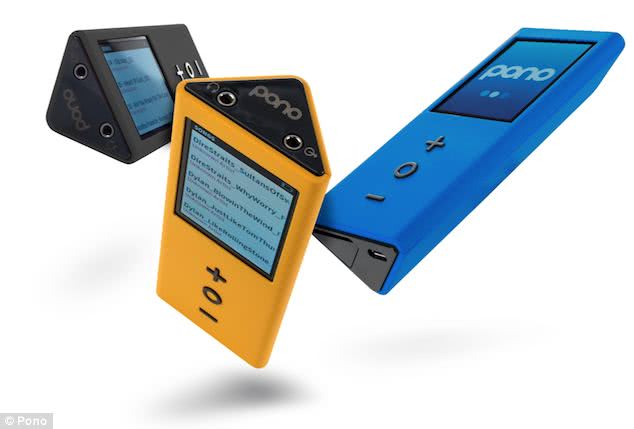After several years of development, Neil Young’s high fidelity music service named Pono is set for its official unveiling later today at SXSW.
Ahead of the big announcement at the Austin, Texas industry conference however, new details on the Canadian music legend’s new digital platform and high fidelity music player have arrived.
Specifically the techs and specs for the PonoPlayer portable listening device, an updated and consumer-ready version of the triangular looking gadget that Young first showed off on Letterman back in 2012.
The PonoPlayer will have 128GB of memory and retail at US $399, with discounted pre-orders available on 12th March via crowdfunding platform Kickstarter, according to the press release published on Computer Audiophile.
The player can store “about 100-500 high-resolution digital-music albums, depending on the resolution and length of the original recording” and memory cards will be available for additional storage and for collating playlists.
The PonoPlayer was developed in association with Ayre Acoustics, who contributed the guts of the system and reportedly contains (for the tech-savvy among you) zero-feedback circuitry and digital filters to stop the “unnatural pre-ringing” typically found in compressed audio formats like mp3. “It’s about the music, real music. We want to move digital music into the 21st century and PonoMusic does that.”
Described as a ‘high-resolution, studio-quality, cloud-based digital music ecosystem’, along with the dedicated PonoPlayer, there is an accompanying digital download service which will be operated through the device’s desktop-enabled “media management” app, working much like iTunes.
Love Music?
Get your daily dose of metal, rock, indie, pop, and everything else in between.
The Pono online database will offer “the finest quality, highest-resolution digital music from both major labels and prominent independent labels” as well as web-store to offer “PonoMusic recommended earbud and headphone products.”
“It’s about the music, real music. We want to move digital music into the 21st century and PonoMusic does that,” says Neil Young in the press statement. “We couldn’t be more excited about bringing PonoMusic to the market.”
PonoMusic Chief Executive John Hamm adds: ” our goal was to offer the highest quality digital music available from all the major labels with the world’s greatest sounding, user-friendly portable music player. We’ve achieved our goal and we are excited to launch our Kickstarter campaign next week to invite music lovers everywhere to join the PonoMusic community and reserve a PonoPlayer for their own enjoyment.”
Neil Young has long talked about the aim of Pono in delivering a super-detailed audio experience that will revolutionise the music industry.
During an award acceptance speech at the start of the year, the 68-year-old musician said, “the time has come for us to recover and to bring music back to the people in a way that they can recognize it in their souls – through the window of their souls, their ears. So they can feel and vibrate and so that they can get goosebumps. We cherish those fucking goosebumps. We really need those.”
Young has been developing the system as far back as 2012 when he brought his PonoPlayer prototype onto the Late Show With Letterman. Information on the delayed Pono launch kept trickling in through 2013, including details on how the high definition audio will focus on outstripping the common music consumer’s digestion of compressed mp3s (through the likes of iTunes, YouTube, Spotify, Pandora and so on).
Pono also got the tick of approval from some music industry bigwigs, including major labels Warner, Universal, and Sony, who confirmed in September last year that “three to five thousand albums” had already been converted to the new high-end Pono format.
Along with the launch of Pono, March will also see Young release a brand new studio album, A Letter Home, described by the singer-songwriter as “one of the lowest-tech experiences I’ve ever had,” rumoured to be recorded at Jack White’s Third Man studios.

































